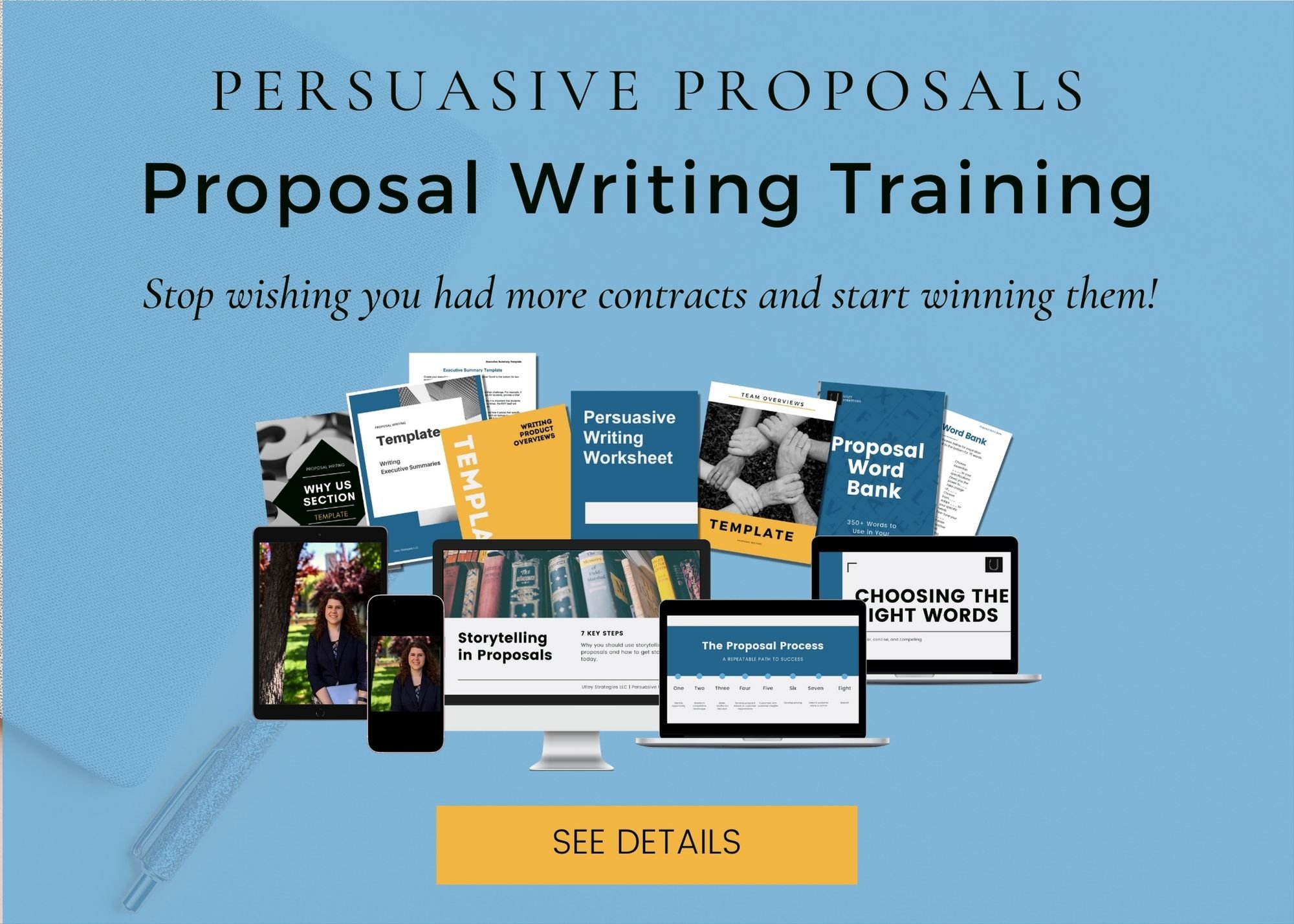BTS: Creating a WINNING Proposal Against an Aggressive Competitor
A couple years into consulting, I had a client approach me who was concerned about a very aggressive competitor who was pursuing a contract that my client had held for ten years. The contract was a huge part of their business, and the competitor had been doing all of the right things to win over the customer–holding frequent meetings, conducting demos, meeting with all types of stakeholders, etc.
My client knew that if they didn’t create an outstanding proposal, they might lose the contract and have to rework their business.
Fortunately, we started working together, and I helped them to develop a clear strategy and showcase it within their proposal. They ultimately re-won the contract, and the customer even commented on how impressed they were with the proposal.
While that case was a happy story, not every company knows what to do if you find yourself up against an aggressive competitor. If this happens to you, follow the steps below to create a compelling (and likely winning!) proposal.
Competitor Review
The very first thing we did when we started responding to the RFP was have a meeting specifically devoted to the competition. While there was one main aggressive competitor, we didn’t want to focus all our efforts on them only to lose to another company who happened to be pursuing the customer in a more quiet way.
For the competitor review, we identified the main companies who would be bidding (this was helped by the Pre-Bid meeting where my client was able to see and identify everyone in attendance). We then dove into the strengths and weaknesses of each. Special time was given to the aggressive competitor because they were the closest match to our solution, and we knew some members of the evaluation committee leaned in that direction. We reviewed their offer and noted any key differences–good or bad. We then worked through the list, finding ways to show that the good differences might not actually be good and ways to highlight our strengths over their weaknesses.
Clear Win Themes
Once the competitor review was completed, we were able to compare our solution with the competition and create 4 solid win themes. I find win themes to be much easier after a competitor review because you can take your notes of strengths and weaknesses and group them together based on similarities. Usually the win themes will emerge naturally, which is what happened in this case. We had a few bullet points of specific items to highlight under each win theme, which made writing the proposal much easier.
Focus on Evaluation Criteria
This was an RFP situation, so while we had strategy discussions without diving into the Evaluation Criteria too much, as we worked through the win themes and what to include, this all came back to the Evaluation Criteria. Because my client was the incumbent, they often knew what was important to the customer in each area, which allowed us to really address each requirement.
Specific Examples in Proposal
Developing the strategy is just one piece. The important part is translating that strategy into the proposal.
For this opportunity, we had a lot of statistics to share as the incumbent company. We incorporated these within the cover letter, Executive Summary, and any applicable section throughout the proposal. Because my client had a good record and relationship with the customer, this approach really helped the proposal shine. We even were able to include photos of my client working with the customer.
References and experience were a big part of the Evaluation Criteria, so we focused on including only the best references and having specific write-ups that addressed the requirements of the RFP. This meant we started out with boilerplate descriptions and reworked them to align with what the customer was asking for specifically.
Light Ghosting
Because there was an aggressive competitor, we used light ghosting within the proposal to subtly call out their weaknesses. If you aren’t familiar, ghosting in proposals is a way of pointing out a potential issue with another solution without directly calling it out. In this case, the competitor didn’t have strong customer support, which we knew the customer would use a lot since my client was the current contract holder. We were able to include a couple sentences that spoke to what life would look like without my client’s top notch customer support. We even directly addressed having a general help line vs dedicated customer support.
Review Meeting
Once we drafted the proposal, we held a final review meeting to compare the evaluation with our proposal and identify any gaps. This raised a few concerns and highlighted some areas that had previously been discussed but weren’t addressed within the proposal. After the review meeting, we tweaked the proposal to align with the feedback, and it was ready to go out!
Winning the Contract
As mentioned above, we did win the contract and received very positive feedback on the proposal. If you’d like to follow a similar process but aren’t sure where to get started, then check out the Bid to Win course, which covers how to create a competitive strategy and key meetings to hold for every RFP.
Or grab the Key Review Meeting Templates bundle for a quick start without the training.



